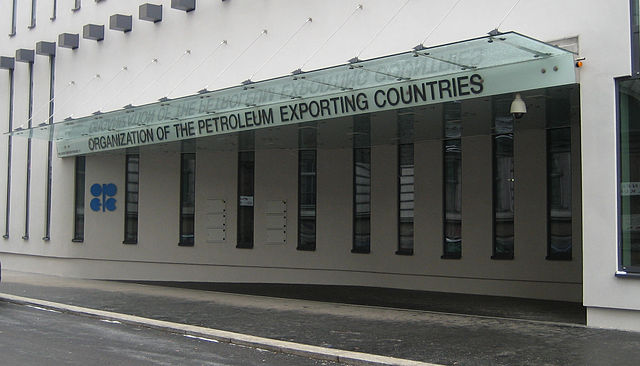OPEC and a group of non-cartel producers agreed on November 30 to extend the agreement to reduce production by the end of 2018 to reduce reserves and support oil prices.
Now the market is wondering how the producers will get out of the deal when excess inventory will be eliminated.
According to two sources from Reuters in OPEC, the group's secretariat in Vienna is tasked with developing a plan with different options, but it is too early to talk about how this plan will look like.
Publicly the oil and energy ministers of the OPEC countries say that it is too early to talk about the exit strategy. OPEC said that manufacturers want to continue working together after the end of 2018, including on supply management issues.
Oil prices rose to a level that OPEC considers favorable. However, the group has not yet reached its stated goal of reducing oil reserves in developed countries to an average five-year level.
According to OPEC, in October, oil reserves in OECD countries were 137 million barrels higher than the average five-year level.
Since the beginning of the implementation of the OPEC + agreement in January, the surplus relative to this level has been reduced by 200 million barrels, the Kuwaiti oil minister said on Wednesday.
Discussion of the issue of withdrawal may be required until December 2018, if, as OPEC expects, the world oil market will return to its balance sheet by the end of 2018. OPEC and its allies will hold another ministerial meeting in June.
Earlier in December, the International Energy Agency (IEA) reported that the world oil market is likely to show a surplus in the first half of 2018, as production growth in the US compensates for a decline in OPEC production.
"The overall increase in supply may exceed demand growth: in the first half of the year, the surplus may amount to 200,000 barrels per day (bpd) before [the market] returns to a deficit of about 200,000 bpd in the second half of the year, as a result which in 2018 as a whole will be observed a balanced market," - noted in the agency's monthly report on the situation in the oil market.
"Much can change in the next few months, but it seems that the producers' hopes for a happy New Year with a reduction in inventories that continue in 2018 at the same rate of 500 thousand bpd that we observed in 2017 may not to be realized, "the IEA warned.
source: reuters.com
Now the market is wondering how the producers will get out of the deal when excess inventory will be eliminated.
According to two sources from Reuters in OPEC, the group's secretariat in Vienna is tasked with developing a plan with different options, but it is too early to talk about how this plan will look like.
Publicly the oil and energy ministers of the OPEC countries say that it is too early to talk about the exit strategy. OPEC said that manufacturers want to continue working together after the end of 2018, including on supply management issues.
Oil prices rose to a level that OPEC considers favorable. However, the group has not yet reached its stated goal of reducing oil reserves in developed countries to an average five-year level.
According to OPEC, in October, oil reserves in OECD countries were 137 million barrels higher than the average five-year level.
Since the beginning of the implementation of the OPEC + agreement in January, the surplus relative to this level has been reduced by 200 million barrels, the Kuwaiti oil minister said on Wednesday.
Discussion of the issue of withdrawal may be required until December 2018, if, as OPEC expects, the world oil market will return to its balance sheet by the end of 2018. OPEC and its allies will hold another ministerial meeting in June.
Earlier in December, the International Energy Agency (IEA) reported that the world oil market is likely to show a surplus in the first half of 2018, as production growth in the US compensates for a decline in OPEC production.
"The overall increase in supply may exceed demand growth: in the first half of the year, the surplus may amount to 200,000 barrels per day (bpd) before [the market] returns to a deficit of about 200,000 bpd in the second half of the year, as a result which in 2018 as a whole will be observed a balanced market," - noted in the agency's monthly report on the situation in the oil market.
"Much can change in the next few months, but it seems that the producers' hopes for a happy New Year with a reduction in inventories that continue in 2018 at the same rate of 500 thousand bpd that we observed in 2017 may not to be realized, "the IEA warned.
source: reuters.com





